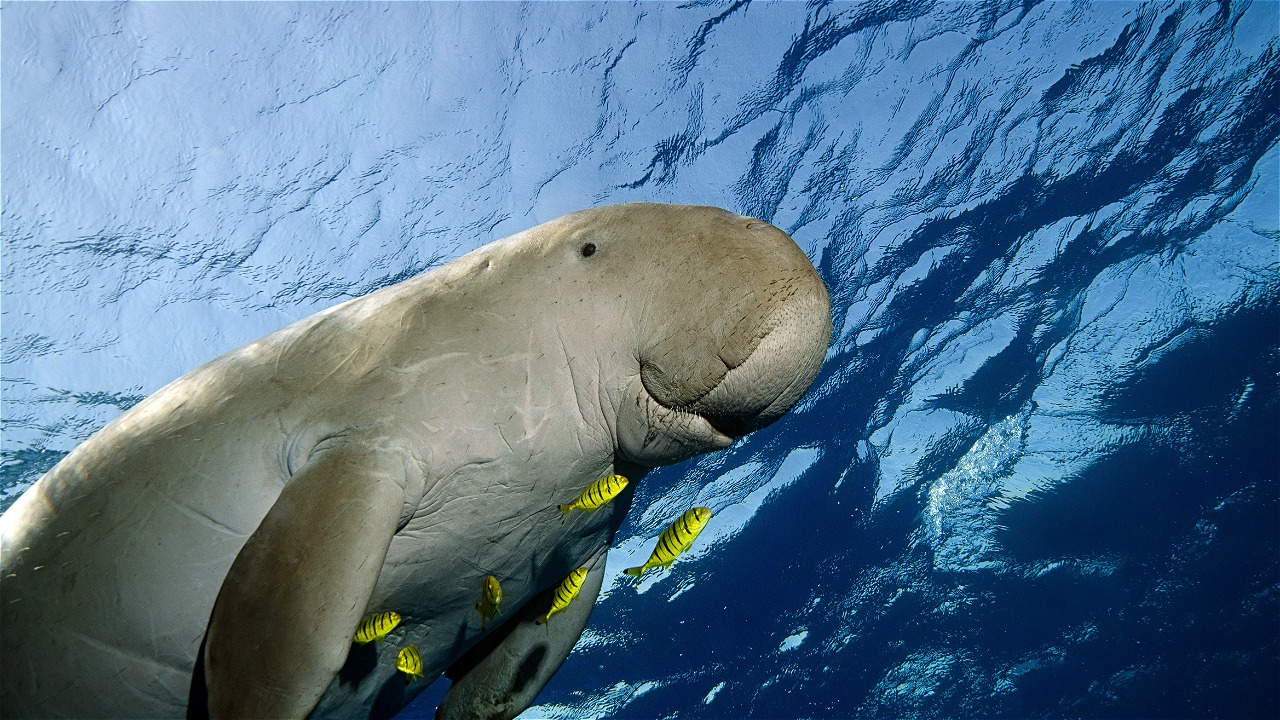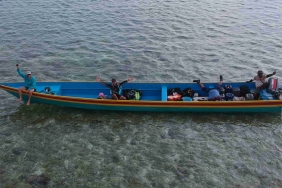WELCOMING NATIONAL WILDLIFE DAY, KKP INVITES PUBLIC TO PROTECT DUGONGS AND SEAGRASS ECOSYSTEMS
In order to welcome the National Wildlife Day (HCPSN) which is commemorated every November 5, the Ministry of Maritime Affairs and Fisheries (KKP) through the Directorate of Conservation and Marine Biodiversity of the Directorate General of Marine Spatial Management voiced to all parties the importance of conservation / protection efforts for seagrass ecosystems which are the habitat of exotic marine mammals Duyung (Dugong dugon). This was conveyed by the Director General of Marine Spatial Management, Brahmantya Satyamurti Poerwadi, Jakarta (2/11).
The launch of the dugong and seagrass conservation campaign was carried out on Pari Island, Kepulauan Seribu, with seagrass planting activities by the Directorate of Conservation and Marine Biodiversity, Directorate General of Marine Spatial Management of the CTF together with WWF-Indonesia, the Oceanographic Research Center of the Indonesian Institute of Sciences (P2O-LIPI) and the Faculty of Fisheries and Marine Science of the Bogor Agricultural University.
""This campaign invites people to be more responsible for the coastal/seagrass ecosystem which is the habitat of dugongs. We can contribute simply by not littering, not buying dugong-based products such as tears or fangs, and collaborative activities to increase awareness of the function and role of seagrass habitats for coastal ecosystems, "he explained.
Despite being one of the protected animals, the dugong is one of the exotic marine mammals that has not received much attention regarding its protection efforts. Loss of the main habitat (i.e. seagrass beds), is one of the serious threats to the sustainability of the dugong population. On the other hand, the status of dugong populations can be an indicator of the health of coastal ecosystems in general. The loss of dugong habitat, among others, is due to human activities on land such as pollution, reclamation, garbage and so on.
The Relationship between Dugongs and Seagrasses
Head of the Oceanographic Research Center of the Indonesian Institute of Sciences, Dirhamsyah, said that dugongs and seagrasses are two biota that cannot be separated. Seagrass beds are important habitats for dugongs that feed on seagrass leaves and rhizomes, especially from pioneer species such as the genus Halophila and Halodule. Based on LIPI data from 1,507 km2 of seagrass meadows in Indonesia, only 5 percent are classified as healthy, 80 percent are less healthy, and 15 percent are unhealthy. Seagrass meadows are faced with the threat of coastal area conversion, decreased seawater quality, and destructive fisheries practices.
Through the dugong and seagrass conservation campaign, the Directorate of Conservation and Marine Biodiversity of the Ministry of Maritime Affairs and Fisheries together with WWF-Indonesia, the Oceanographic Research Center of the Indonesian Institute of Sciences (P2O-LIPI) and the Faculty of Fisheries and Marine Science of the Bogor Agricultural University will mobilize the active participation of various parties in efforts to protect and manage dugong and seagrass habitat areas, especially in strategic locations namely Bintan, Alor, Tolitoli, and West Kotawaringin.
People are still unfamiliar
The results of a public awareness survey conducted by WWF-Indonesia in 2017 showed that 92 percent of respondents were not fully aware of the relationship between dugongs and seagrasses. "Protecting dugongs means paying attention to the condition of their habitat, which is seagrass. The rate of seagrass habitat destruction caused by human factors (anthropogenic stress) can be reduced if people are aware of the relationship between the two biota," said WWF-Indonesia's Coral Triangle Director Wawan Ridwan.
Basically, seagrass beds provide great benefits for human life. This ecosystem supports the sustainability of fishery resources in Indonesia. For example, various types of fishery commodities, such as baronang (samandar) fish, crab crabs, and shellfish are found in seagrass beds. Besides being beneficial for fisheries, seagrass meadows also help reduce the rate of climate change by absorbing carbon dioxide emissions. Seagrass meadows can also buffer waves, as well as capture and stabilize sediment, so that the water becomes clearer.





